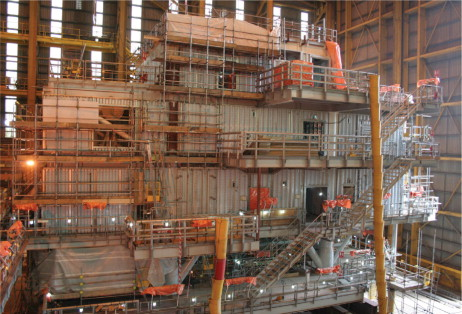
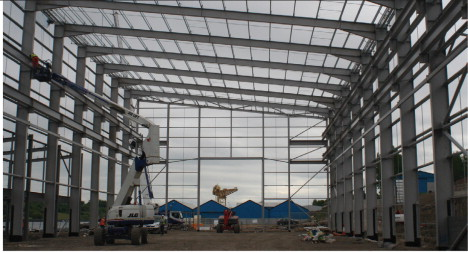
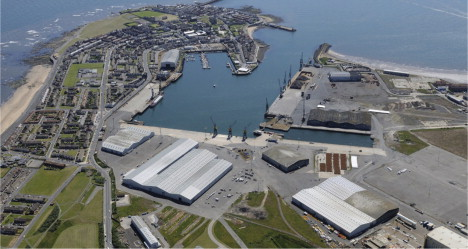
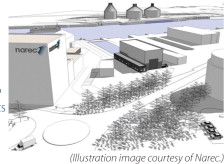
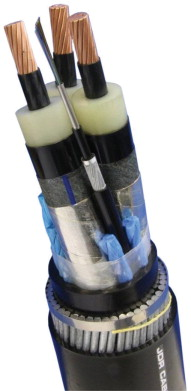
The supply chain does not only consist of the ‘nuts and bolts’ of wind turbines and their foundations. There is also a question of workforce, not to mention the equipment and manpower needed for operation and maintenance (O&M).
Charles Reynard at legal firm Eversheds' Energy Team says several clients in the North East England are already recruiting based on announced offshore wind developments in the UK.
David Levin, also at Eversheds, has been involved with the Forewind consortium which will develop the circa-9 GW Dogger Bank zone off the east coast of England (though Levin is keen to emphasise he is not a spokesperson for the consortium).
“Forewind, as far as the North East is concerned, is now where we're beginning to look for our resource,” Levin says. He does not believe Forewind in particular will have many problems organising its supply chain. “The wonderful thing about Forewind is that the consortium – incorporating the members and the owners – has a complete bible of how to build and deliver projects. Some are used to being at the utility end like SSE; and Statoil does oil and gas platforms around the world and in difficult conditions. What they do have in common is they do know how to source labour, skills and experience.
“History shows that in all of these projects, local supply is important,” Levin adds.
However, Forewind is not the only developer, and in most places the local supply chain is not ready. Levin says there could be supply chain problems “in that you're looking for a key supplier and they have not actually got the resources.” Levin believes framework agreements will be key to avoid such problems “because it gives the certainty - there are always price fluctuations, but if you know that the orders are going to come, then that is the answer.”
He also thinks that most contracts for the offshore wind rounds will go to multiple contractors: “This brings its own challenges. That's why the skills of large companies that are experienced are vital. They have to be able to project manage this in a way that they will deliver on time and on budget.”
Supply chain must be active
Companies that want to reap some of the rewards of offshore wind development have to be proactive rather than wait for the large developers and consortia to come to them. Eversheds' Levin says, “if companies want this business, they should knock on the door – it's as easy as: ‘tell me what your skills are’, and engage with the companies – [even if] they are sub-sub-sub contractors to the main contractor.”
This is not always easy, however, when all the renewable energy subsidies seem to go to owners and developers rather than the supply chain. Levin says: “If you feed it [the financial support] in at the top end, you hope there's a trickle-down benefit…but as for direct support, I don't think there's any specific to the supply chain.”
One example of being proactive is Shepherd Offshore Renewable Energy Park in North East England. The family run company is in the process of converting a former shipyard into a potential manufacturing and service hub for offshore wind, wave and tidal. So far, Shepherd has invested £10 million.
Bruce Shepherd, Managing Director, says the park could accommodate cable manufacturers, wind blade manufacturers, turbines, nacelles, towers, subsea structures, as well as foundations etc. Clipper Windpower has already signed a lease, and its blade factory for the 10 MW Britannia turbine is already under construction. Clipper is due to move in at the end of the summer and start production this autumn, Shepherd says.
Shepherd Offshore has also started building supply chain units – smaller units for companies servicing the industry. “There will be about 20 units [available by the] middle of next year,” Shepherd says.
The build-out is not just for the UK Round 3, but also for what comes after. “We are trying to make sure that what we put in now will last the life of Round 3 and [beyond].
“What we want people to do is to plan for success. We don't want people to put up a building that is going to be great for a few years and in a few years' time they realise that they should have had a bigger building.”
At great risk
Shepherd Offshore is financing projects out of its own pockets, and Bruce Shepherd says: “It's a great risk…the only funding we're allowed to receive is for the ground infrastructure.”
Asked when he expects to see return on the investments, Shepherd says: “When I'm scattered on the beach – it's a long term return!”
Shepherd Offshore has not signed anyone up for the sites yet other than Clipper Windpower, although he adds “we're having one or two non-disclosures. We're talking to the supply chain and the manufacturing industry, but nobody is signed up apart from Clipper at the moment.” Nonetheless, Shepherd is optimistic: “We hope to have the major infrastructure in by Christmas.” The site is expected to be fully developed by the end of 2012.
The landlord
Just like Shepherd, port operator PD Ports aims to be ready for the expected influx of offshore wind manufacturing capacity, and the associated supply chain, and has been in discussions with “people in the industry”. However, it is not all that easy to plan ahead.
“It's difficult, because where do we start? Do you talk to Forewind? Because you speak to Forewind and you say: ‘right, who are you going to buy your turbines from?’ – ‘I don't know.’ ‘When are you going to decide?’ – ‘I don't know.’ So you then get the manufacturers, and the manufacturers say: ‘We hope to sell some to Forewind, but we don't know yet.’ This is the kind of debate we had with Forewind,” says Paul Barker, Development Director at PD Ports Hartlepool.
Darren Thompson at PD Ports adds: “I don't think anyone really understands fully the logistics…[we're] trying to stay ahead, but how far ahead? – The specs are changing all the time.”
The chicken and the egg
Barker says that if someone comes and says: ‘We want you to strengthen the quay’, that could easily cost PD Ports over £10m, and it could take 46 weeks to have it complete. And PD Ports is not alone in facing this problem.
Consortia are not likely to opt for just one manufacturer, and they know they will need a supply base and fabrication facilities. However, as Barker points out – what will happen when several developers approach the relatively small supply chain all at once? It has become a chicken and the egg situation – the supply chain will not ramp up until there are orders, but the orders may slip away if they do not ramp up in advance.
“We've had lots of people around who have said: ‘Yes, we would love to do this, would love to do that,’ and we say: ‘When do you want to do it?’ And they say: ‘When we have an order’,” Barker says.
When it comes to Forewind, PD Ports are positive towards the idea of collaboration, but say they will need to know one way or another soon. PD Ports has other potential clients and sectors they could develop, he warns. Barker goes on to criticise developers for appearing to think the supply will be ready and waiting when they require the wind turbines, foundations and infrastructure.
“I think the frustration for everyone is that somebody has got to make a decision. They are already talking about going past the 2020 time frame,” he says. He is also incredulous that Round 3 has been announced long before Round 1 and 2 have been completed, and Round 4 is expected to be announced around 2014.
But that said, Barker adds, “the supply chain will always mould itself to the requirement of the principle of a receiver – that's what we do well. We spot a gap between principle and the supplier…but the problem is that the supply chain is a consequence of an activity, it's not a driver of consequence.”
The fabricator's view
Construction firm Heerema's facility in Hartlepool (North East England) is reportedly the largest indoor fabrication hall in the UK. It built the transformer platform for Greater Gabbard, and is now working on two 1000 tonnes transformer platforms for the Sheringham Shoal offshore wind farm.
Frank Moran, Managing Director at Heerema Hartlepool, says Heerema got into the offshore wind business fairly recently: “We saw the opportunity here a couple of years ago when the oil and gas industry was beginning to stutter a little bit, to get involved in the offshore substations which are really like medium sized oil and gas platforms – although obviously a lot less piping and more electrics.”
To design and build one platform takes about 18 months. The Greater Gabbard platform took about 17 months from contract being awarded, “but it was quite a challenge,” Moran says. However “as the industry develops, the rules will become clearer.” The Round 3 substations are probably going to be larger – more on size with medium to large oil and gas platforms – perhaps 3500-4000 tonnes.
Ian Jackson, Manager of Projects, echoes the concerns of the rest of the supply chain: “There's a big, big emphasis on offshore turbines. Everyone talks about nacelles and turbine towers. Not many people talk about what it sits on in the sea – the jackets.”
Heerema is already speaking to landlord PD Ports about expanding its buildings to include subsea structure facilities. “Say we are talking 5000 subsea structures by 2020 – the most we could ever build, if you take all the land and build five new sheds pretty much twice the size of what we've got now – the most we could ever build is 100 a year.
“There aren't many places in the country that has land like we do here to build these things. So our question has always been: who is going to build them, where are they going to build them, and where is the money going to come from?”
Moran adds: “The equation is that we need 7000 turbine supports and in a big yard you can produce 100 a year – and it's not going to start until about 2014, so that leaves 6 years – that's 1200 a year.” He adds: “It doesn't take a rocket scientist to work out that something needs to happen pretty quickly in terms of fabrication facilities.”
No guarantee of work
“The Round 3 licences have been issued now and we're trying to engage in conversations with the developers to see whether there is any interest in some kind of partnership to develop fabrication facilities. Clearly a company like ourselves can only guess at the capital cost of something like that, but it's probably a couple of hundred million pounds. We don't have that kind of money and we can't afford to build a facility where we have no work guaranteed.
“A partnership needs to be formed in the UK between the developers and fabricators and supply chain – all the way along – probably assisted by the likes of the RDAs, the Crown Estate and all the other stake-holders. And it needs to start moving pretty quickly.”
Jackson says Heerema is willing to expand, “but for us to say: right, we're going to build it, we need someone in the background saying: yes, we will come and help you and give you an order for x amount - or else we're not going to build a facility that sits there ready.” And to build a new facility could take 18 months to two years, Moran adds.
Narec – helping the supply chain |
|
The National Renewable Energy Centre (Narec) in the UK is set to become a national hub for renewable energy testing, and perhaps even training. Narec plans to have three new capital assets by next year:
By 2012, Narec also plans to have its 100 MW offshore wind R&D site in operation. The site will have water depths of 30-60 m with room for 20 wind turbines in the 5-10 MW class. The infrastructure cost of the project is estimated at £18.5 million. Alan Lowdon, Director of Technology & Innovation, says Narec is already attracting overseas clients and that the centre is an attractive one to replicate. The centre has already been asked for advice in the design of similar centres outside the UK. Read more on http://tinyurl.com/37r3mcg. |
However, this does not seem to have dawned on many developers and those higher up the food chain in the offshore wind industry. When Heerema hears the offshore wind industry talk about shortage of bearings, or a shortage of blade manufacturers, it raises the question about the shortage in fabrication facilities and materials such as steel. But: “They just look at us as if we're stupid. They haven't even looked at that side of it. They have just shut major steel works 20 miles from here – and in three or four years' time, there's going to be a shortage of steel to build everything we need.
“There's no coordination with anyone on looking forward to what we really need to meet these targets. They all seem to look at nice turbine pictures – [but] there's a lot more stuff behind that, that no one seems to pick up on…it's just: ‘oh, a fabrication company will build them’. They don't understand the size of what they need.”
There have also been several delays for offshore wind projects, and these are now on the table again. “That takes up capacity as well, and everybody will be fighting for the same capacity,” Moran says, and Jackson adds: “Once the fabrication halls are full, we cannot bring anything else in.”
Although Jackson and Moran would like to see as much manufacturing for Round 3 to stay in the UK as possible, Moran says that “to deliver anything like the government targets in 2020 or shortly thereafter, would require more than UK work.” He concludes: “The future is bright and the future is wind – but we need to get on with it.”
The cables
JDR Cable Sytems is so far the only cable manufacturer in the UK involved in offshore wind. Steve Parfitt, General Manager at JDR Hartlepool, says the company has just finished the 200 km of array cables for Greater Gabbard wind farm, and this summer JDR Cables started work on the array cables for the London Array, which will total about 230 km. Parfitt expects it will take about a year to get the cables ready.
Unlike many parts of the supply chain, Parfitt says they have not had problems finding skilled people as there have been cuts in jobs in similar industries.
At the moment, JDR Cables only has the capacity to produce array cables, but it is in the process of investing in a vertical lay-up machine which will increase output significantly as longer pieces of cable could be manufactured in one go. Parfitt expects to commission the new machine at the beginning of 2011. This means that JDR Cables will be able to produce export cables, which could expand its business opportunities further.
The company has also just been granted permission to more than double its 100,000 ft2 facilities by adding 116,000 ft2.
“If you look at a typical project, there's as much value in the export cable as there is in the array cables. So we are only, at the moment, attracting half the value of a project. And in some cases, the project consortium doesn't want to go to two cable manufacturers. They want to go to one. We have been lucky in some respects that we've managed to get them to split so many.”
JDR Cable has also worked on the Wave Hub project, which is now installed off the coast of Cornwall in the UK. The subsea power cable is 25 km long.
In addition to producing array cables, the company also service and repair cables once installed.
Parfitt does not believe that the UK supply chain can, at the moment, meet the needs for Round 3. However, JDR Cable has, like Shepherd, had the confidence to invest now for what is likely to come. “We are nearly two-three years ahead of the big impact. Round 1 was really to test, to see what people could do – if we could put these things offshore without them falling over. Round 2 is a bit more serious in terms of volume. Round 3 is going to be the big push.
“When you go from 150 turbines to 300 turbines to 2000 turbines – think of the infrastructure supply chain you need to supply that. It's not here…there will be no one contractor that can take on all that business.”
How to get there
TWI, which used to be a welding training centre for offshore oil and gas, is now helping local companies that want to make the transition to offshore wind. The centre demonstrates new technologies and equipment, provides training, consultations, failure investigations, and research into new materials. Although many skills are transferable from oil and gas, offshore wind brings with it unfamiliar materials such as the use of composites, and a much larger manufacturing scale is needed than oil and gas has ever faced.
Colin Ribton, Project Director at TWI, says: “What is needed is foundation factories, blade factories, tower factories – a completely different approach form the oil and gas approach. Many of the techniques, many of the materials and the know-how that's been gained in oil and gas can be transferred across, but the whole approach to manufacturing is completely different.”
He believes there is a good opportunity for local companies to become part of the offshore wind supply chain. One example is that most wind turbine manufacturers do not make their own foundations, but sub-contract these – usually to local contractors. However, smaller companies can also reap the benefits from offshore wind. “If you make bearings, or if you make hoists to hoist people up to the top of the wind turbine, these parts are only a small part of the overall turbine parts, but if you are a small business in this area, you are looking at being able to make 1500 sales of that every year, so it's well worth having as a business.”
However, as mentioned by PD Ports, there is a chicken and egg situation. “The problem we see in the wind industry in general is that the market has been stifled for years. We've got lots of sites that could have been developed, lots on the planning board, and then companies have gone to the wall because the orders haven't come through. And the orders have flowed in insufficient quantity. – Not enough to make it profitable. We never had a continuity of orders,” he says.
Ribton too believes there will be many fighting over a few suppliers once Round 3 really takes off, and offshore wind expands in the rest of Europe. “There will be a market demand which is greater than the manufacturing capacity.”
He nonetheless remains optimistic: “The whole thing will come together, I'm sure, there's a real will to do it.”
Renewable Energy Focus Volume 11, Issue 5, September-October 2010, Pages 20-23
